A Guide to ‘Catan’: Everything You Need to Know About Trading Wood for Sheep
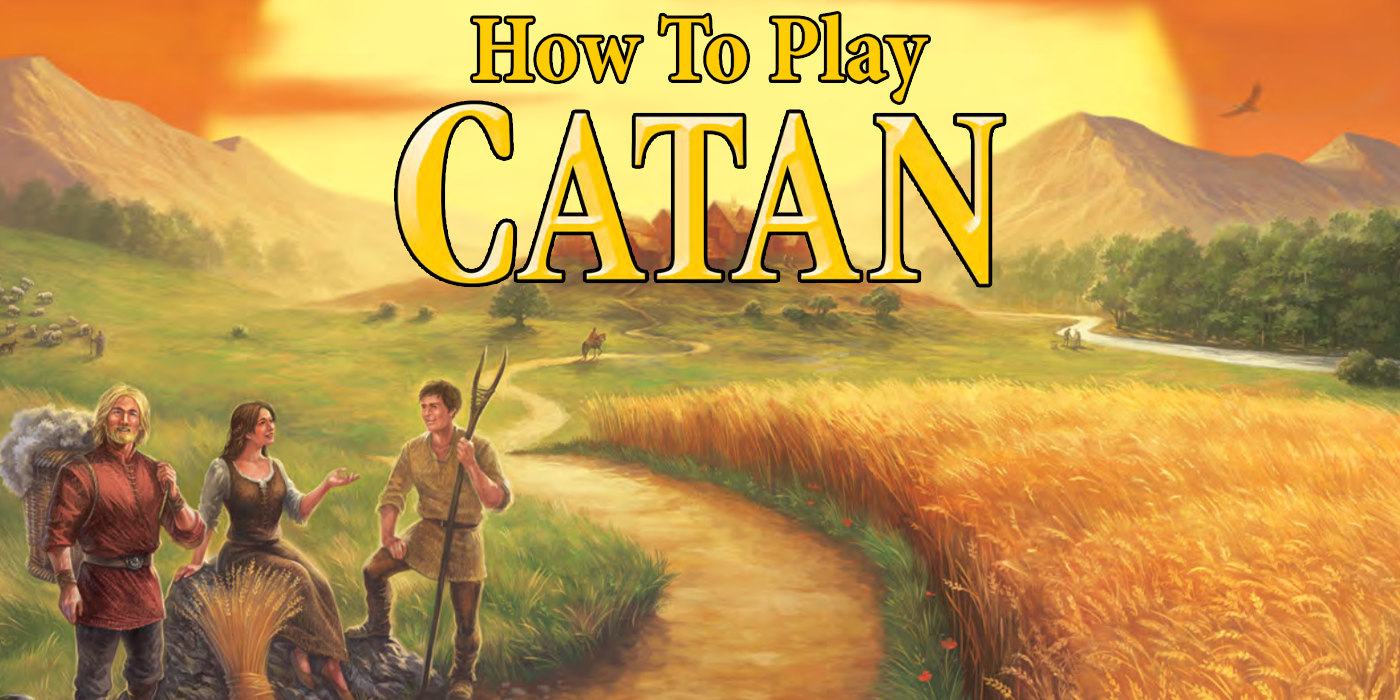
Learn how to play Catan from setup to victory with some tips and tricks for beginners.
Overview
Catan (previously known as Settlers of Catan) is a competitive resource management and economic negotiation board game. Players will collect resources from the different terrain hexes of the board and then use those resources to build more structures to be able to collect even more resources. Certain buildings will give the owning player Victory Points (VP). The first player to reach 10 VP wins the game.
For a look at the full rulebook, check out the official Catan site.
Setup for Catan
Board Setup
First, the board must be constructed. The board in Catan is made up of hex tiles, each representing one terrain type. They are Hills, Forest, Mountains, Hills, Pasture, and Desert. The rules have a recommended starting setup for new players.
However, advanced players can also build the board randomly. However the players choose to assemble the board, the terrain tiles are arranged in a hexagon with 3 tiles on each side. The terrain tiles are held in place by the Sea Frame pieces.
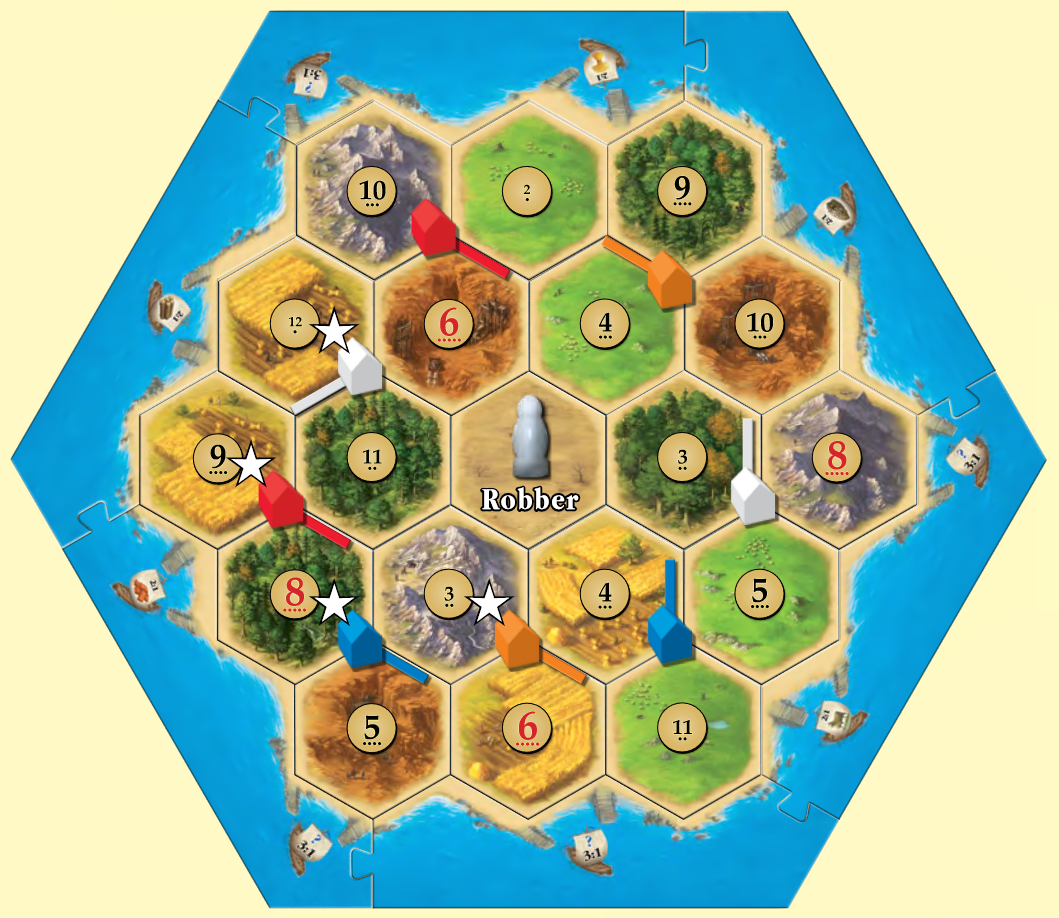
Then, one circular production token is placed on each terrain tile, except the Desert. Again, there is a recommended setup for these tokens, but players can agree to place them randomly as well. However, it is highly recommended that players avoid placing two tokens with high value (showing a 6 or 8) adjacent to each other. This is also true with low-value tokens (2 or 12).
Once that is done, place the robber on the Desert tile.
Cards Setup
Next, separate the resource cards by type and place each deck face up within reach of all players. The resource cards are Brick, Lumber, Ore, Grain, and Wool.
Each resource card has a corresponding terrain tile. Hills provide Brick, Forest gives Lumber, Mountains give Ore, Fields give grain, and Pastures give Wool.

The Development cards should be shuffled and placed facedown within reach of all players.
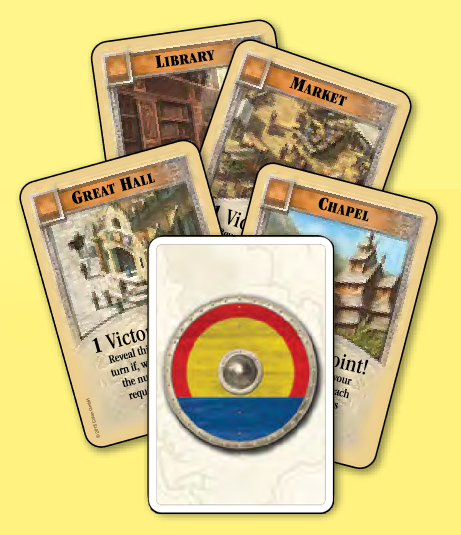
The Longest Road and Largest Army cards are placed beside the board.
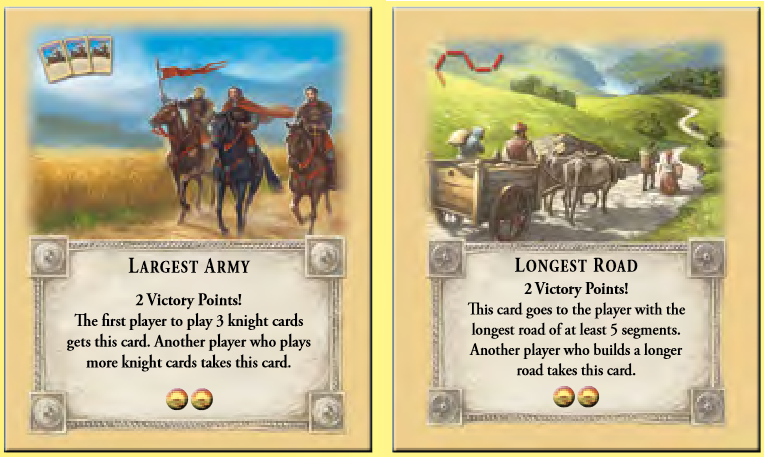
Player Setup
Each player chooses one of the colors of structures from those available, as well as that color’s Building Card. The structures are 15 road segments, 5 settlements, and 4 cities. Each player rolls both dice, and the player who rolls the highest gets to start their setup first.

That player places one of their settlement pieces on the corner intersection of any 3 terrain tiles. Then, they place one of their road segments adjacent to the settlement, along the edge intersection of 2 terrain tiles. Each player, in clockwise order, repeats this process.
However, players are never able to place a settlement with 2 intersections of any other settlement, regardless of who owns it. Once each player has placed 1 settlement and 1 road, the player who placed their pieces last then places a second settlement and road somewhere on the board. All players repeat the process again, but this time in counter-clockwise order.
Each time a player places their second settlement, they collect 1 resource card for each corresponding terrain tile that that settlement is adjacent to. Players should keep their hand of resource cards hidden from the other players.
On Your Turn
Each turn in Catan will have one active player. That’s the player whose turn it currently is.
Produce
Each turn begins with the active player rolling both dice. The sum of the dice determines which terrain tile will produce resources on that turn based on the circular number token on the terrain tile. Each player who has a settlement or city on any resource tile that produces resources will collect those resources, even if it is not their turn.
Settlements collect 1 resource from each producing tile, and cities collect 2 resource cards from each terrain tile. A player with multiple settlements or cities on a tile will collect resources for each of those settlements and/or cities.
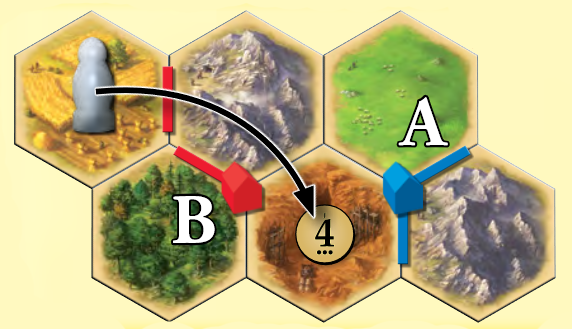
None of the production tokens have a 7. So, if a player rolls a 7 during the Production Roll, they activate the Robber. But first, all players who are currently holding 7 or more resource cards in their hand must discard half (rounded down) back to the supply. Then, the player moves the Robber onto any circular number token and steals a random resource card from any player who has a settlement or city adjacent to that terrain tile.
Further, any time a terrain hex with the Robber would produce resources, the Robber prevents the production, and no resources are collected from that hex by any player. In the above example, both settlements A and B will not collect resources if a 4 is rolled, even if the Robber was placed there by one of those players.
Trade
The active player can now trade the resource cards in their hand with other players. Non-active players may not trade with each other. All trades must be with the active player. There are very few restrictions on how players can negotiate a trade so long as both players agree.
Additionally, the active player can use Maritime Trade. Any player may trade to the supply at a 4:1 rate. For example, the active player can return 4 Ore to the resource deck and receive 1 of whatever resource they would like.
If a player owns a settlement or city on a harbor space, they will have an option for a more favorable trade. The harbor spaces will allow that player to trade at a 3:1 ratio or at a 2:1 ratio, but only by trading the resource shown on the harbor.
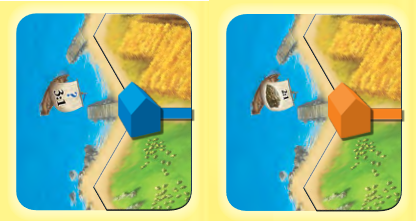
Build
The active player can spend their resources to build. Players can build roads or settlements, upgrade a settlement to a city, or purchase a Development Card. The costs for each construction are listed on the Build Card.
Road segments must connect to another of that player’s roads, settlements, or cities. When building a new settlement, it must be at least 2 spaces away from all other settlements and must also be connected to the controlling player’s road network. Each settlement is worth 1 VP for the owning player.
Cities are not built separately. Instead, when a player builds a city, they replace any of their settlements on the board for a city. A city is worth 2 VP. Development cards have a variety of effects, as detailed below.
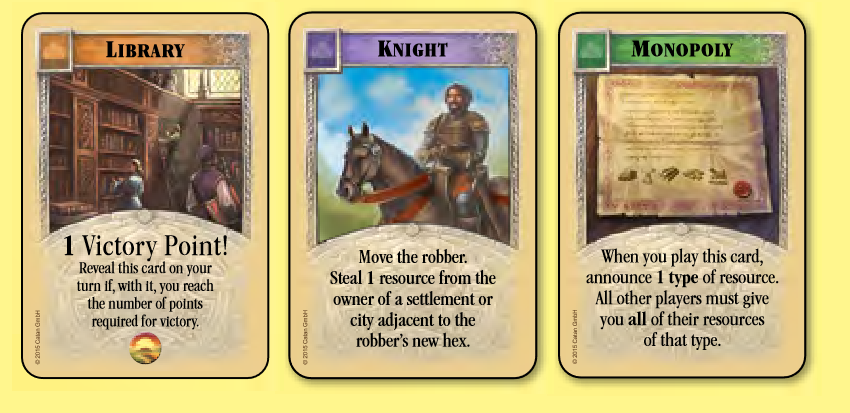
Special
When a player purchases a Development Card, they draw the top card from the deck and keep it hidden from the other players. The card will detail its use. Only the active player can play development cards, but not on the turn it was purchased.
While some Development cards are discarded after use, Knight cards remain in front of the player who played them. The first player to collect 3 Knight Cards takes the Largest Army card, which is worth 2 VP.
However, if at any point another player controls more Knight cards than the player who currently holds the Largest Army, control of it moves to that player instead.
Similarly, the Longest Road card is first given to the first player to build a road network of at least 5 segments in continuous length. Branching paths are not counted for Longest Road. Again, if another player constructs a longer road network, they take control of the Longest Road card.
Victory
The first player to reach 10 VP is declared the winner of Catan! Orange Development Cards grant additional VP and are only revealed if the VP they grant would have the player reach 10 VP or more.
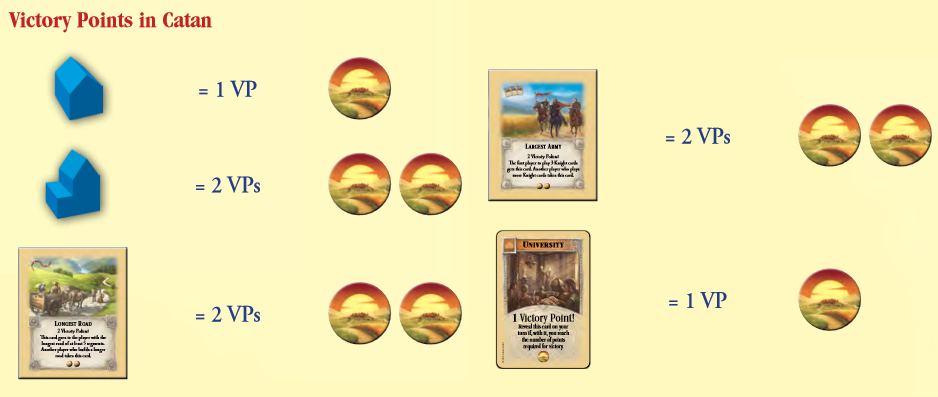
Tips and Tricks for New Catan Players
- Place your starting settlements in places with lumber and brick, as they are required for early expansion.
- Expand early with roads and settlements, then upgrade to cities later.
- Don’t underestimate Development Cards.
- Be willing to negotiate during a trade offer.
- Don’t take it personally when the robber is placed on your most valuable hex.
Most importantly–have fun!





